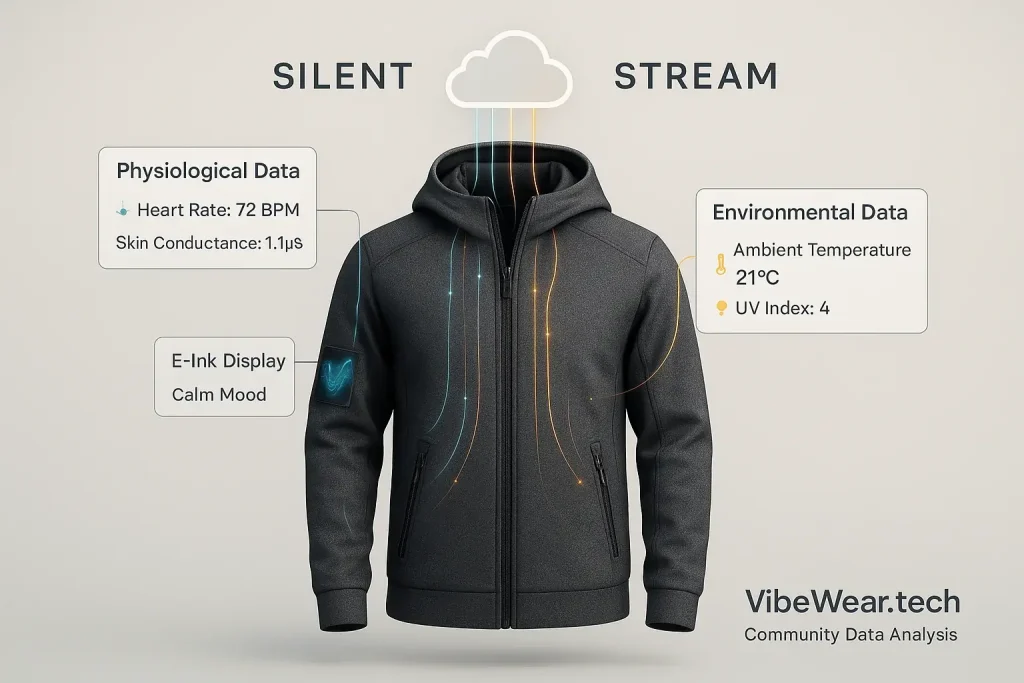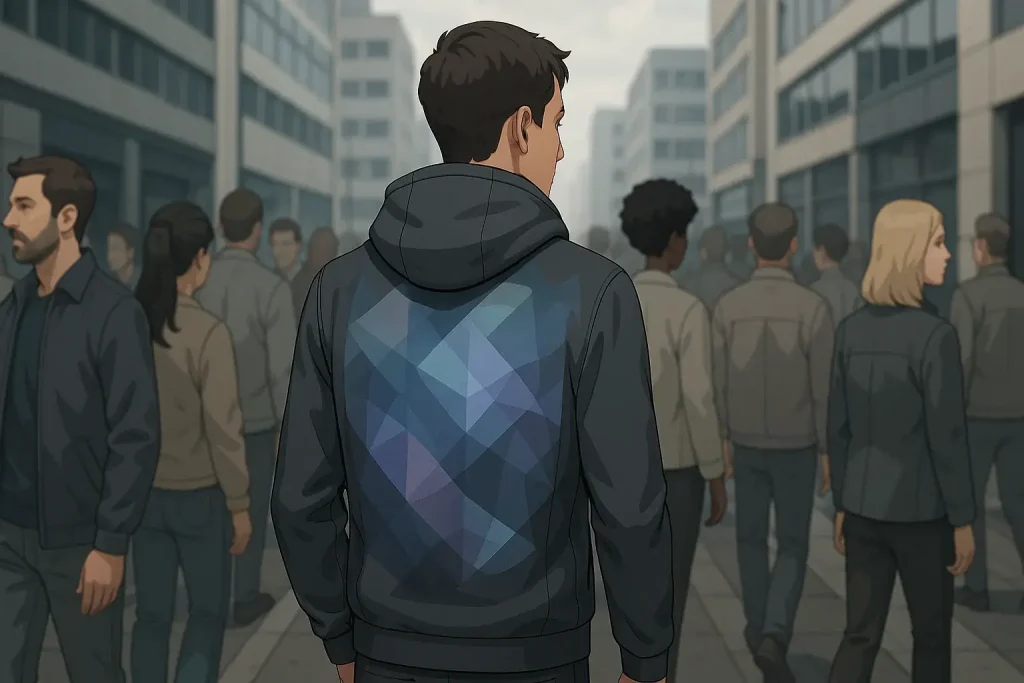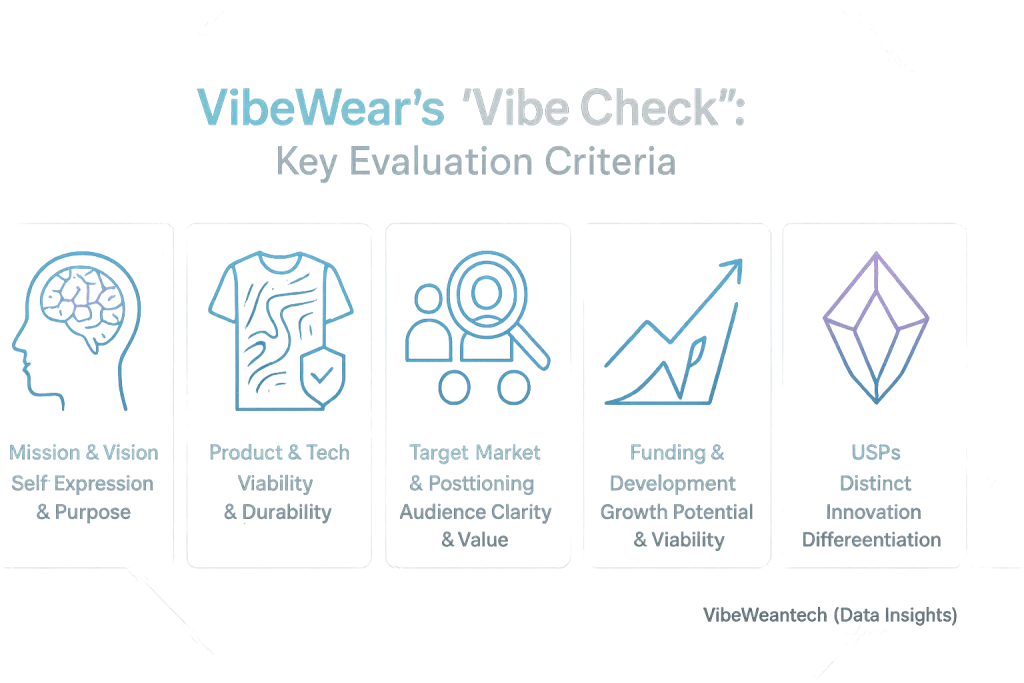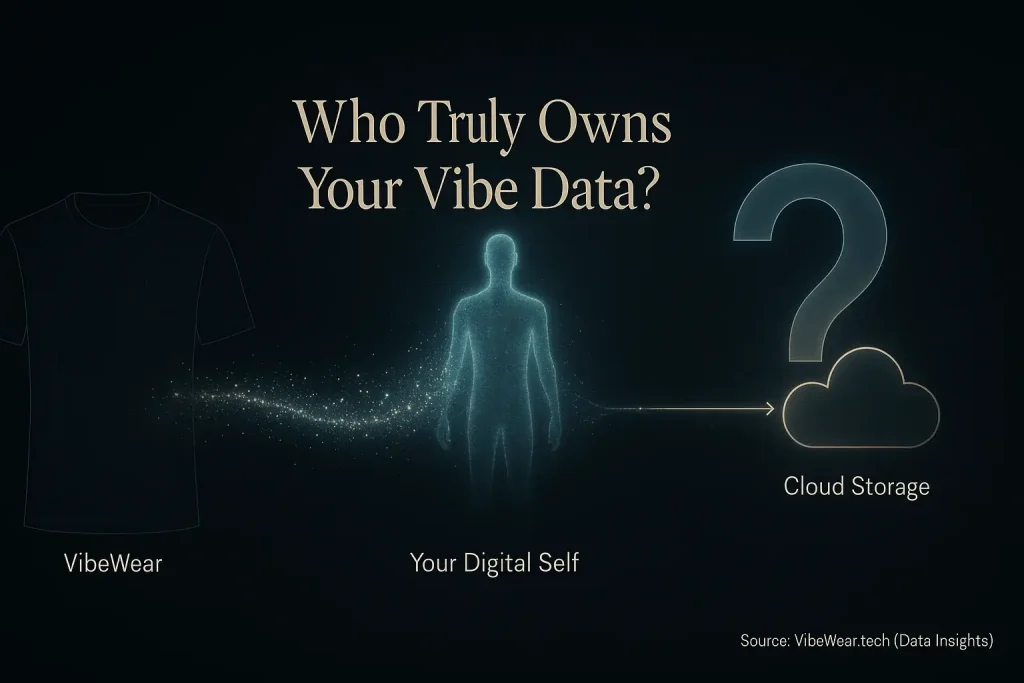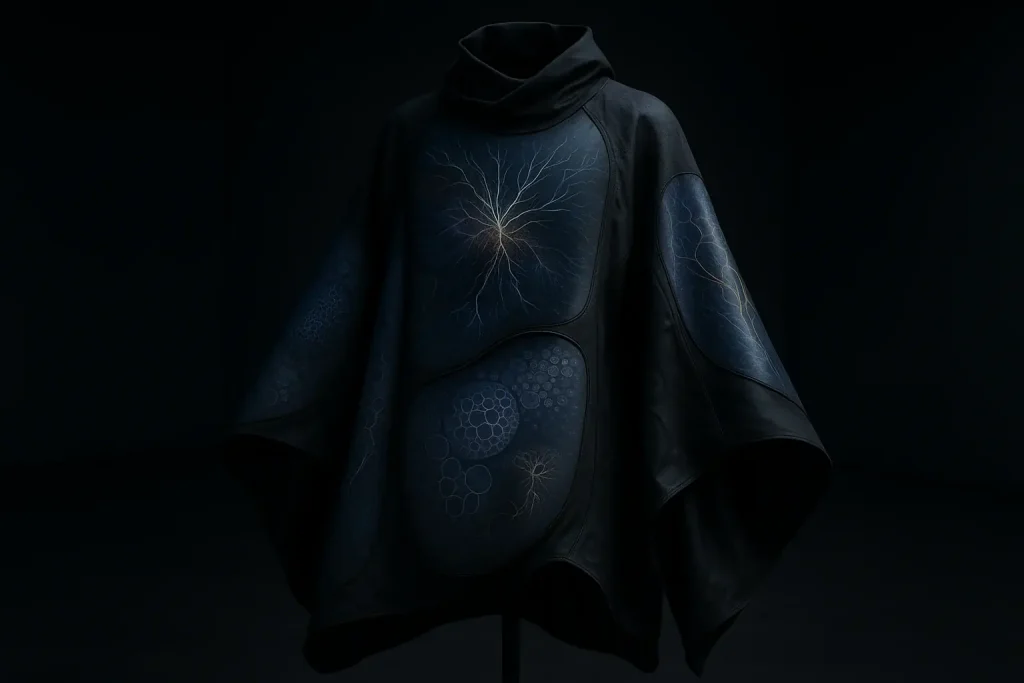The Visible Self: When Your Clothes Speak Volumes in Social Settings
Imagine a party. Everyone's clothing subtly shifts with their genuine feelings. How would that change everything? VibeWear introduces this new possibility. Our technology moves fashion beyond aesthetics, adding a new layer to social interaction.
VibeWear makes internal states visibly external. Your clothes become a direct, undeniable visual signal of emotion. This signals a fundamental change. Traditional fashion remains static, offering only fixed statements. Dynamic self-expression becomes the new norm with VibeWear.
We explore these deep societal shifts. This visible self could subtly alter all social dynamics. Consider empathy. Consider etiquette. VibeWear champions responsible innovation; understanding these impacts is essential. A fascinating societal experiment unfolds.
Beyond Body Language: How VibeWear Augments Non-Verbal Communication
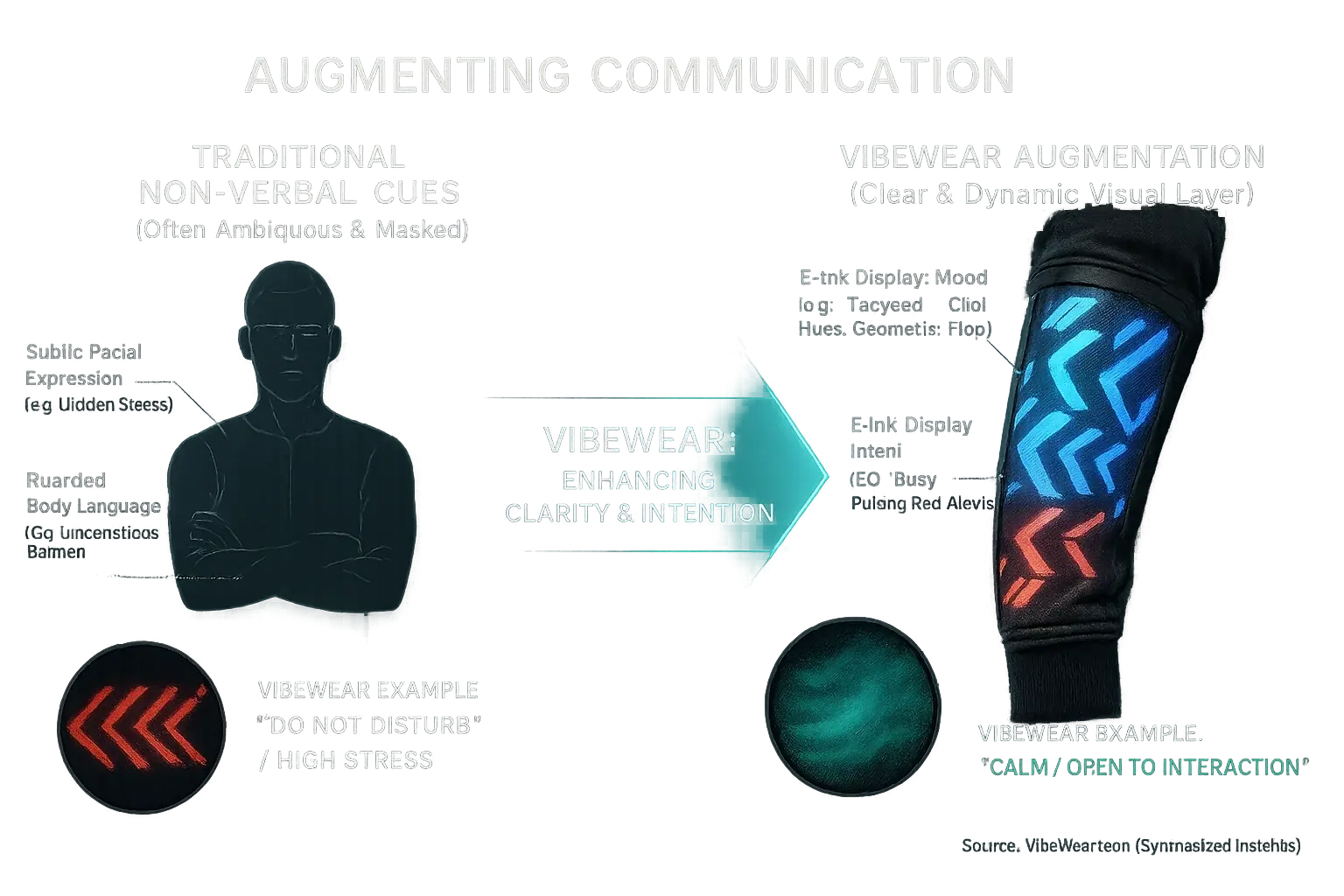
Traditional non-verbal cues often prove subtle. People easily mask them. VibeWear offers a direct visual signal. VibeWear's analysis suggests this new channel offers undeniable clarity. Imagine hiding a stressful day; your VibeWear could subtly shift, signaling your true state.
This visual layer can clarify personal intentions. It can also signal emotional availability. A "busy" VibeWear pattern could mean 'do not disturb'. A 'calm' pattern, however, might invite interaction. Social navigation becomes clearer.
VibeWear potentially allows more nuanced communication. Forget just 'happy' or 'sad'. Think complex emotional gradients instead. These gradients express through dynamic color shifts or subtle animations. Even abstract patterns convey deep feeling.
But here's the kicker. This is not just about passively revealing internal states. It’s also about choosing what to reveal. Some individuals could find VibeWear a powerful tool for intentional self-disclosure. Others could use it to consciously manage perceptions, a true double-edged sword in social strategy.
A Shared Emotional Landscape? VibeWear's Impact on Empathy & Group Dynamics
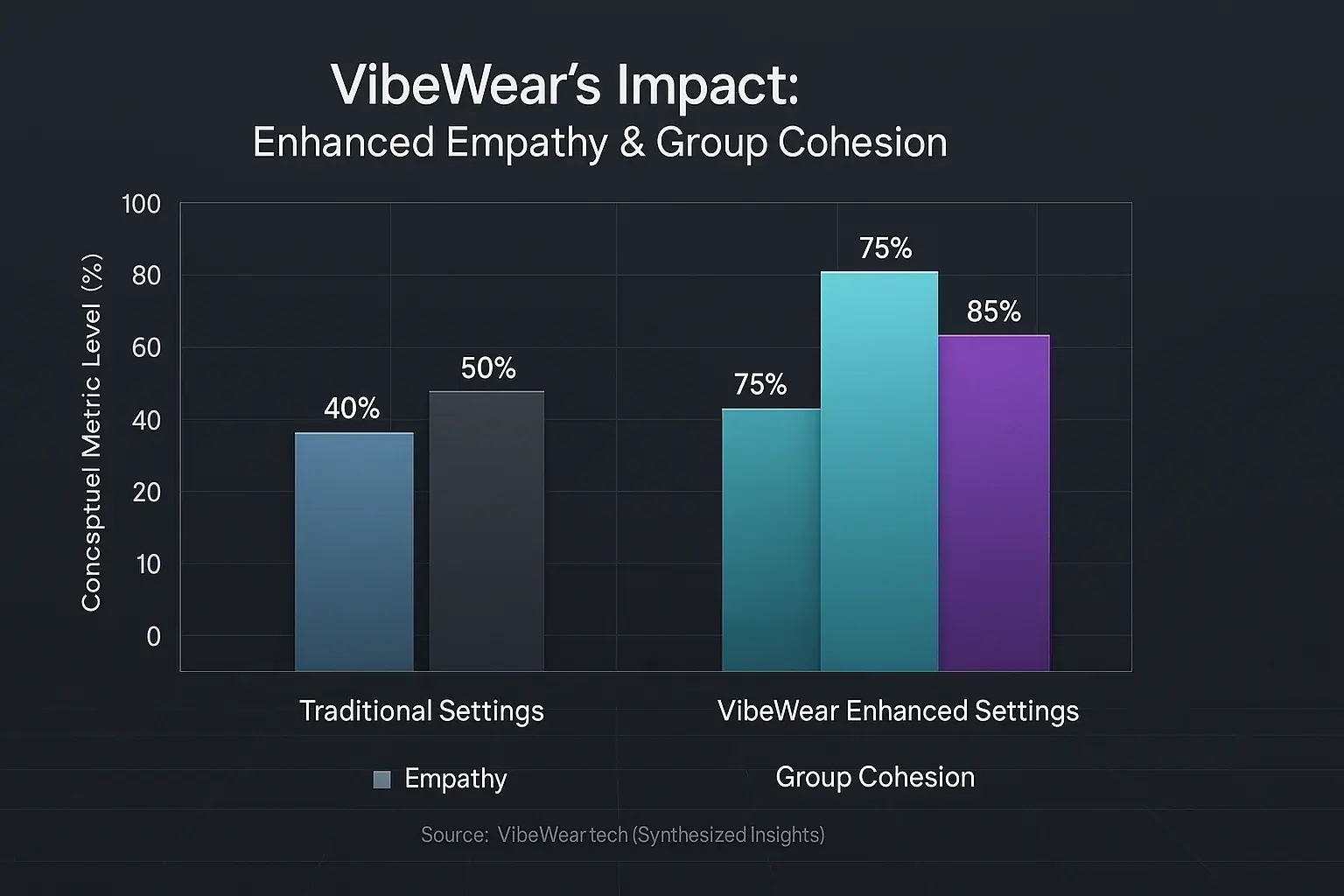
VibeWear could enhance empathy. Someone's stress visibly displays on their clothing. Ignoring it becomes difficult. This visibility might foster quicker understanding. Compassionate responses could surface faster. Imagine a team meeting. A colleague's VibeWear subtly shifts to a 'stressed' pattern. You might instinctively offer support, not push harder on a deadline. Interactions change.
Now, consider group mood synchronization. Could a room of people wearing VibeWear subtly influence emotional displays? This might create a more cohesive, even contagious, group vibe. Studies show emotional contagion is real; individuals often unconsciously mimic others' emotional expressions . VibeWear's visible cues could amplify this effect, fostering shared feelings . A fascinating social experiment unfolds.
A subtle point emerges. Genuine empathy is not just seeing an emotion. It is about understanding its context. VibeWear shows the 'what,' the raw feeling displayed. The 'why' still demands human connection and perhaps conversation. So, VibeWear acts as a powerful tool for initial awareness. It is not a magic bullet for deep, contextual empathy, which can be moderated by relationship dynamics and cultural norms .
VibeWear also hints at new social bonding avenues. Think 'group VibeWear' at concerts. Or during protests. Shared emotional patterns could amplify collective feeling, strengthening group cohesion . Technology already enables large-scale collective emotional expression through platforms like social media . VibeWear could make that expression tangible, wearable, and immediate within physical groups.
The Unseen Pitfalls: Misinterpretation Risks & New Social Etiquette with VibeWear
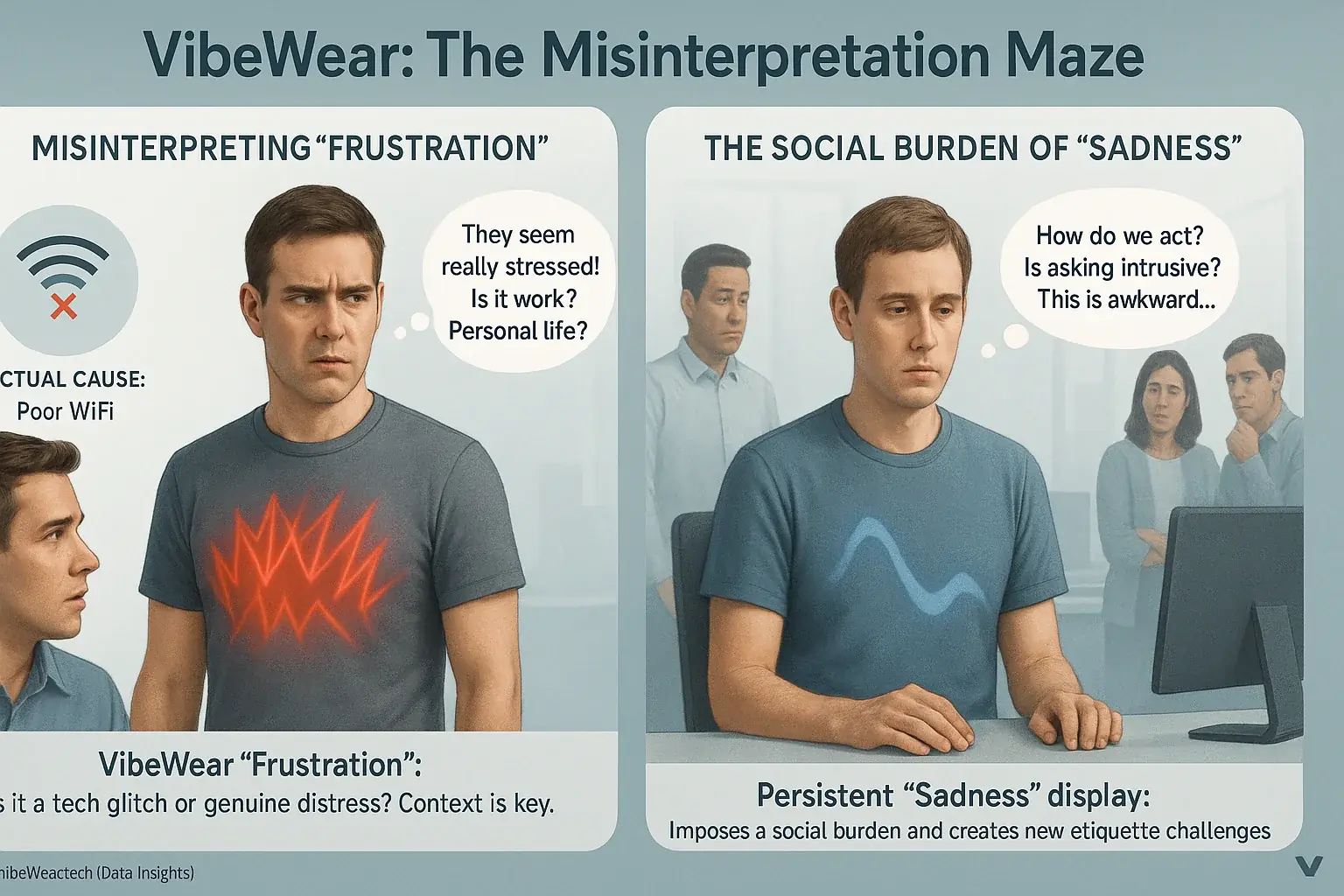
Visible emotion is not instant understanding. Context dictates meaning. Your VibeWear might flash 'frustration'. This display might signal deep stress. Or just a poor Wi-Fi connection. Users might find themselves constantly explaining their clothes. Such explanations risk amplifying social friction, not lessening it. The public expectation for emotional display often blurs genuine feelings with performed ones.
New social etiquette will inevitably emerge. How do you politely ignore someone's 'angry' shirt? Is asking "What's wrong with your VibeWear?" intrusive? Imagine a colleague's outfit persistently displays sadness. This imposes an undeniable social burden on everyone around them. Digital interactions already forge new communication rules. VibeWear will only accelerate this trend. Misinterpretations can easily arise when personal displays reach unintended audiences, a known issue of context collapse online.
Social pressure presents another genuine concern. Could an expectation to 'perform' specific emotions arise? People might feel compelled to project a 'positive vibe'. This is emotional labor in action. Individuals may then feel obligated to manage their displayed feelings to meet perceived social demands. Such constant emotional management directly impacts well-being. This pressure to perform mirrors patterns already observed on other digital platforms.
Here is a different thought. What if VibeWear aids social avoidance? An introverted person might choose a 'do not disturb' pattern. This choice acts as a polite shield. Yet, it also risks curtailing spontaneous, positive social encounters. The technology thus presents a fascinating paradox. It offers new pathways to deeper connection. Simultaneously, it provides tools for subtle, self-imposed isolation.
The Ethical Crossroads: Where Social Dynamics Meet Privacy & Manipulation
Mood-adaptive fashion opens amazing social avenues. This technology also presents serious ethical questions. Privacy is a primary concern. Who sees your displayed emotions? Who might record that sensitive data? The potential for emotional manipulation also looms large; user intent will not always be transparent or positive.
These issues are not merely abstract. They demand immediate, thoughtful consideration from everyone involved. Designers must build responsibly. Users need awareness of these new dynamics. Society itself must grapple with the implications of visible, shareable emotions. VibeWear champions this crucial dialogue; explore these topics further at our dedicated Ethics Hub for deeper insights.
The Future of Visible Emotions: Evolving Social Landscapes with VibeWear
VibeWear is clearly more than just new tech. It truly signals a fundamental shift in our social interactions. Future social dynamics could see enhanced empathy flourish between people. Communication might become more direct, more honest. However, VibeWear's analysis also highlights inherent risks. Misinterpretation of displayed emotions is possible. The potential for emotional manipulation also demands critical attention. This balance is key.
Society, VibeWear predicts, will undoubtedly adapt to these technological adaptations. New social norms for visible emotions will slowly take shape. These unwritten rules will govern how human interaction evolves in this new emotional landscape. The dialogue surrounding VibeWear's societal impact is only just starting. VibeWear.tech remains dedicated to meticulously exploring this ongoing evolution. We intend to foster this critical discussion, shaping understanding.
This evolving landscape presents a direct question for you. How will your personal social world change when emotions become visibly wearable? VibeWear believes this technology redefines many daily human interactions. The full effects remain unseen. What will you pioneer?

